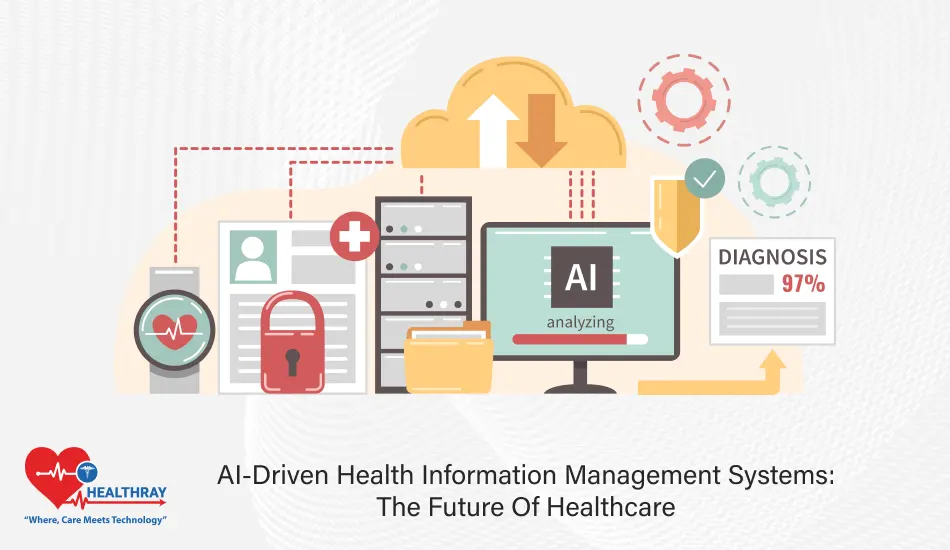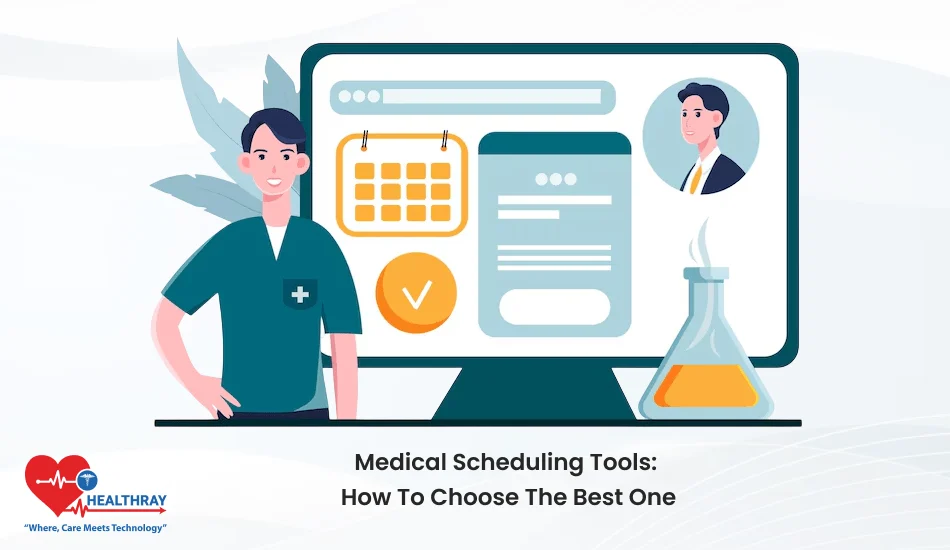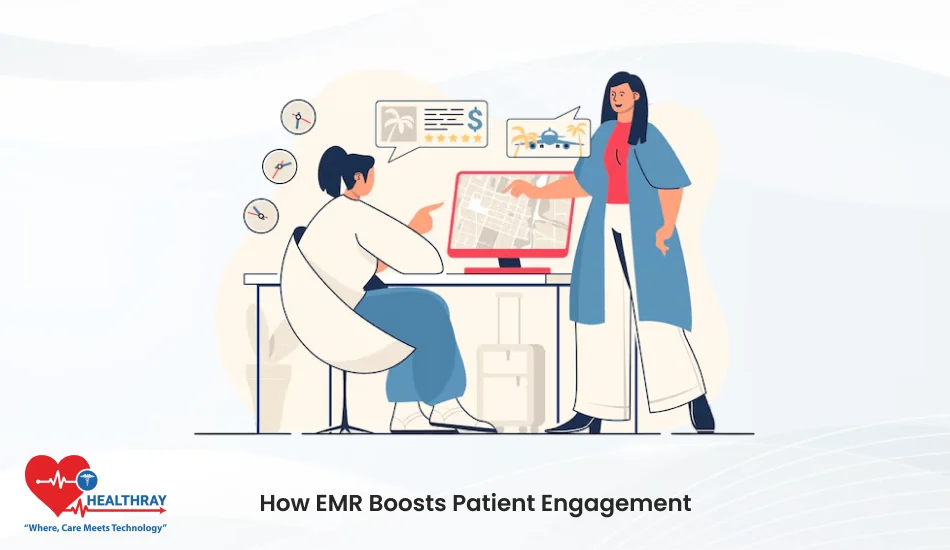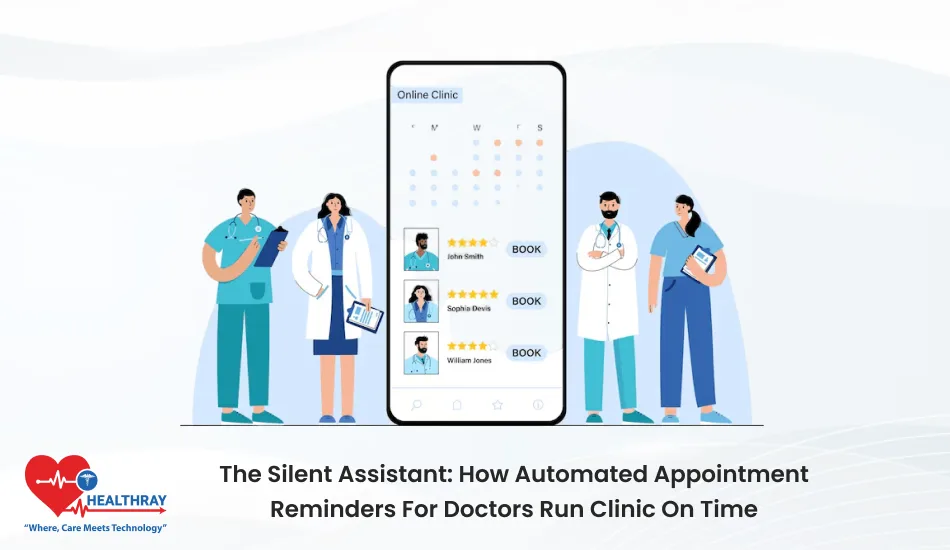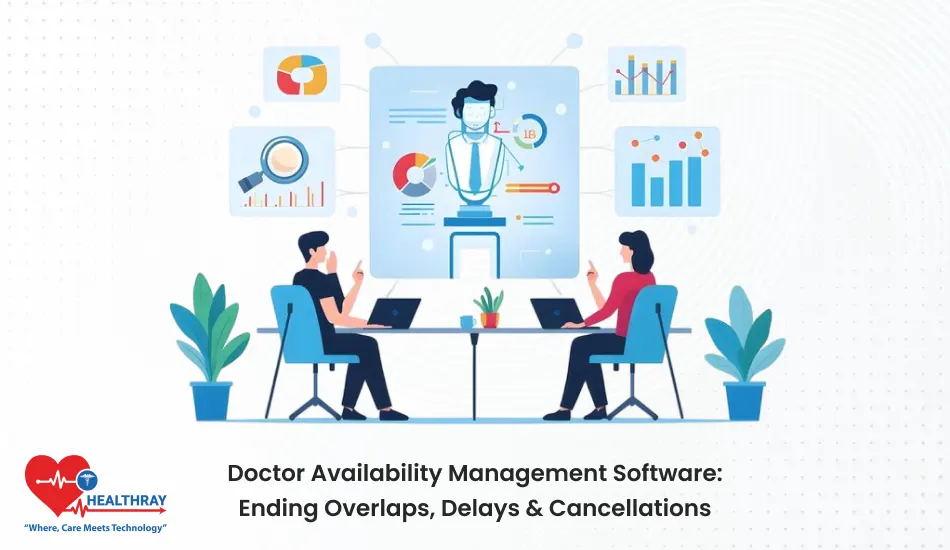What is driving the next big shift in healthcare? AI-powered health information management systems (HIMS). The systems are poised to change how healthcare institutions manage, analyze, and present data while caring for the patient and operating the facilities. These for hospital administrators and physicians are therefore not just a buzzword, they are an indispensable tool that dictates their pace of delivering quality care.
This article will extensively examine the future of healthcare being weathered by the AI-driven Hospital Information Management System. You will see what they are, what they come with, and what they have to counter in order to apply a new thinking of administration and practice for the benefit of patients and the health sector. So, listen as to how these systems might change the core competencies and activities of both administrators and doctors.
AI-Driven Health Information Management Systems
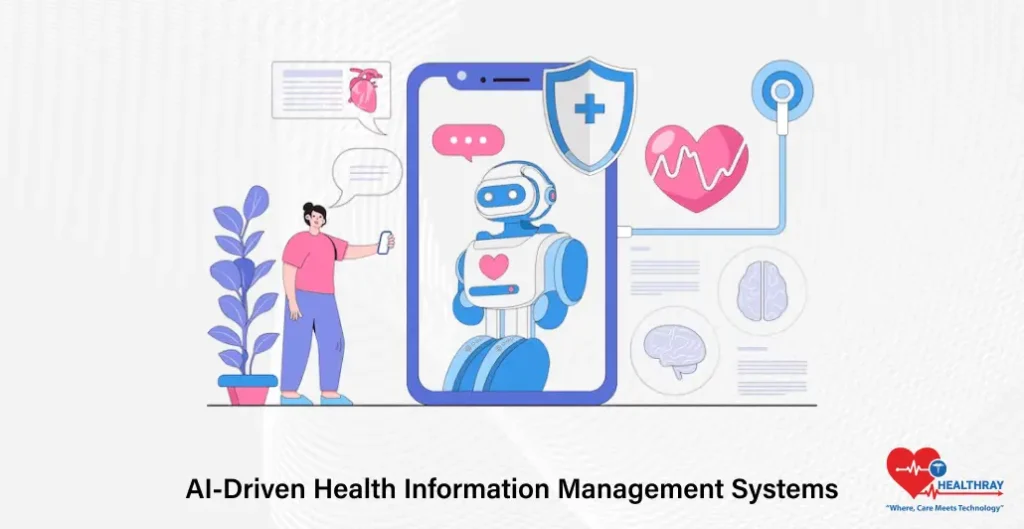
AI-driven health information management systems (HIMS) are technologically advanced platforms that apply AI to organize, analyze, and apply healthcare data. Their function differs significantly from earlier systems by taking over data collection, supporting clinical decisions, making recommendations, and allowing managers to gain better insights into real-time patient care and operational effectiveness.
AI-driven systems provide useful tools for healthcare administrators to easily organize vast amounts of data. For doctors, AI-driven systems guide better clinical decision-making by distilling actionable insights from patient history, diagnostic results, and advanced predictive algorithms. AI guarantees that the information not only gets stored but, more importantly, is converted into meaningful insights.
Some key features include:
- Automation: Takes care of repetitive tasks such as billing, appointment scheduling, and record updates.
- Predictive Analytics: Supports forecasting the risk or trends of patients, which is helpful for preventive care.
- Clinical Decision Support: Shares recommendations based on patient data, research, and best practices.
To summarize, these systems are designed to maximize administrative efficiency while minimizing negative consequences for patient outcomes; hence they are now among the most required tools in modern healthcare.
The Most Important Implication of HIMS for Healthcare Administrators
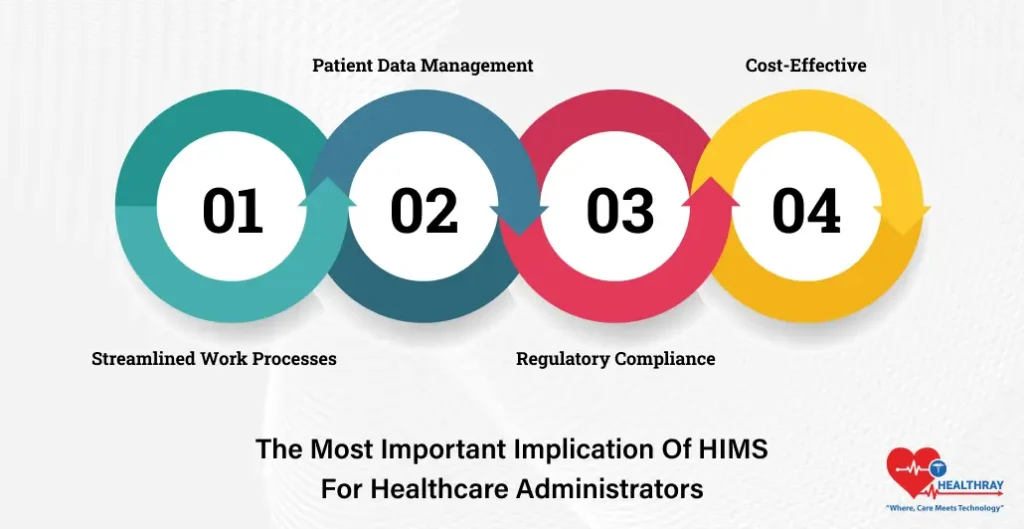
Healthcare administrators are often put into juggling multiple responsibilities; ranging from operational management to compliance assurance. HIMS has adopted a new way of tackling these issues so that they can focus on the crux of the matter; improving the quality of care.
Streamlined Work Processes
AI serves to assist by reducing activities like appointment scheduling, billing, and processing insurance. These automations reduce human error and speed up workflow, saving much time and resources. In this way, administrators are taken from the confines of paperwork to the realm of strategic decision-making.
Patient Data Management
Recognizing and combing through a huge magnitude of patient and operational data is truly daunting. AI takes on that function of organizing, and analyzing it to distill insights into action plans. For example, it could implement patterns into resource allocation to assist admins in staffing and inventory levels.
Regulatory Compliance
Keeping with regulations like HIPAA is ever so consuming. AI systems monitor data utilization in real-time, alerting when potential breach or compliance risk surfaces. Being proactive assists admins in not incurring penalties and keeping trust.
Cost-Effective
AI systems, by promoting efficiency and minimizing errors, have the potential of improving the operational costs. They help in various ways, like pinpointing inefficiencies such as overstaffing or wasting resources, promoting wiser budgeting so that the freed resources can be effectively used elsewhere.
AI-driven HIMS are more than an update in technology; they are strategic tools that help administrators run healthcare facilities more effectively with a high standard of care.
Why AI-Driven HIMS Matter for Doctors
Being the ones at the frontline of patient care, any doctor’s time is counted as the most precious resource in health care. AI-driven health information management systems (HIMS) are tailored to ease their lives while improving patient health. Tools such as these enhance diagnosis, treatment planning, and patient management.
Enhanced Diagnosis and Treatment
AI provides predictive knowledge to doctors by analyzing patient histories, lab investigation results, and medical imaging. For instance, it can isolate the first signs of chronic diseases, like diabetes or heart conditions, enabling timely intervention. Such insights allow them to exercise greater judgment and personalize treatment options.
With the systems evolving continuously, AI healthcare solutions are becoming indispensable in aiding diagnostic accuracy and determination of optimal treatment for outcomes.
Reduced Administrative Burden
A big part of a doctor’s life is used in documentation and for other administrative services. AI systems will automate much of the documentation and administration, such as maintaining records, reminders for prescriptions, etc. With less documentation, increased patient care.
Faster Access to Critical Information
AI is guaranteeing the fact that with vast information out there, retrieval of relevant information concerning the patient can be done faster. That speed is crucial when every second counts towards life or death in urgent conditions. AI guarantees that such records are easily accessed with critical information, such as allergies or treatments being currently administered.
Encouraged Collaboration Possibilities
Collaboration across physicians and other members of the healthcare profession is improved by AI systems whereby pertinent data are organized in an actionable manner. Thus shared insight fosters an environment that promotes coordinated care especially when handling patients with multiple complications.
AI-driven Hospital Information Management software allows doctors to focus on their primary mission delivering top-notch care. By removing inefficiencies and providing data-backed support, these systems are helping doctors achieve better outcomes while managing their time effectively.
Common Challenges in Establishing AI-Driven HIMS
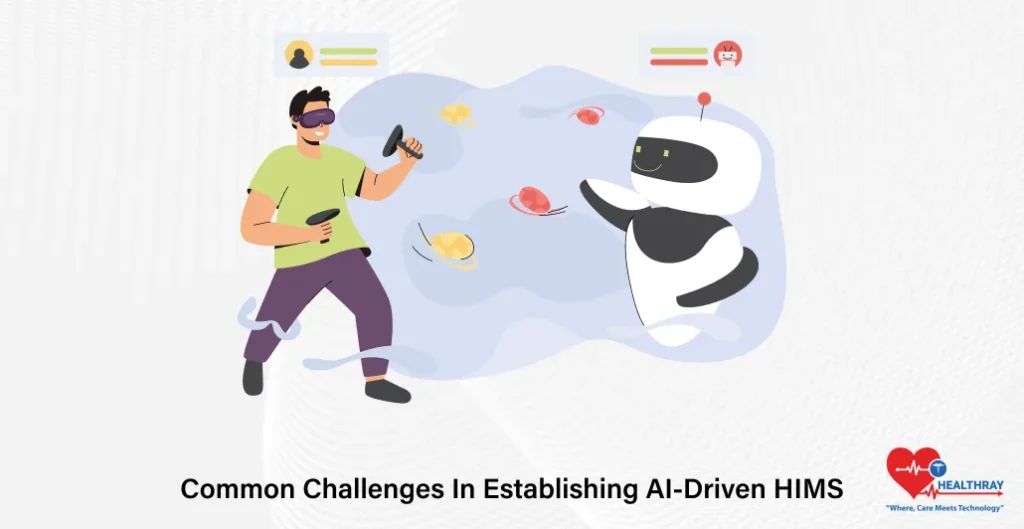
AI-based health information management systems (HIMSs) offer considerable advantages but have their challenges in implementation. Healthcare administrators and doctors must become informed about these challenges so as to ensure successful acceptance and integration into operational realities.
Data Privacy and Security
In the healthcare sector, the topmost priority is patient data protection. There is much sensitive data that the AI system needs, causing fears of data breaches and unauthorized access. Strong compliance with standards, such as HIPAA, and strong cyber security measures are vital but quite complex to implement.
Integration with the Existing Systems
Most healthcare facilities still utilize legacy systems that were not designed for AI. Connecting AI-driven HIMSs with these antiquated systems can become quite problematic, leading to huge expenditures on infrastructure modernizations and training staff.
Cost and Resource Allocation
AI systems are generally costly to adopt, more so in smaller facilities. Tight healthcare budgets may bar resource allocation for hardware, software, and training costs, and long-term financial savings become harder to justify due to delayed realization.
Ethical and Legal Issues
Questions about accountability and transparency emerge when AI is introduced into healthcare. Who answers when an AI system errantly suggests a treatment? It will be possible to alleviate such concerns by ensuring that such technologies substitute the support tool in place of human judgment.
Resistance to Change
Healthcare professionals, just like every other person, can become resistant to change when it comes to new technology. Lacking understanding regarding the capabilities of AI or job loss can hinder adoption, though in addition to effective training programs, the message has to be clear about its benefits
All these challenges need to be pitted against themselves, which will smoothen AI-driven HIMS adoption; thereby, ensuring that the full functionality of the technology is achieved.
The Future of Health Information Management System
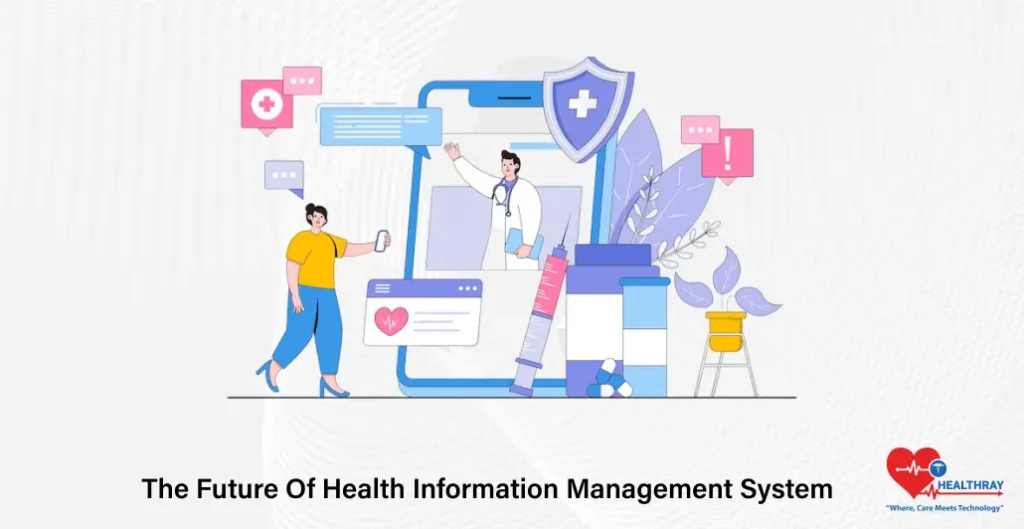
The future of healthcare is bright together with artificial intelligence progress; especially with the emergence of AI-driven health information management systems (HIMS). Such systems will change health delivery, management, and experience in the future as they evolve.
Smarter Predictive Analytics
Continuously, the AI will internally improve its predictive skills for patient outcomes and risk identification. Future systems could consider genetic materials, engaging lifestyle behaviors, and medical histories so as to achieve forecasting of potential health issues at a new level to allow preventive care at that stage.
Integration with Wearable and IoT Devices
There will be future HIMSs, incorporating real-time connectivity from smart and fitness tracking devices, giving relevant updates on the status of patients to their providers and administrators. Such connections will support patient remote monitoring and telehealth services.
Personalized Medicines
AI-driven systems would have better honed specific therapy or treatment recommendations according to individual patients. Future HMIS Software could, in considering the unique patient data, including genetic profiles, minimize trial-and-error methodologies in treatment in suggesting specific therapies and medications.
Real-Time Decision Support
The increasing sophistication of AI algorithms will expand their role in clinical decision-making, thus reflecting implications for more patients’ real-time support in diagnosis pace and accuracy in informing the physician’s choice when under pressure.
Increased Accessibility
The next wave of AI-driven HIMS would be much cheaper and malleable, and smaller clinics and rural health facilities would be approachable and adaptable to it. The democratization of technology would thus play an important role in closing care delivery gaps across different regions.
Enhanced Interoperability
The systems of the future will emphasize interoperability, assuring seamless communication between different healthcare platforms. This increases the probability of sharing the data between the hospitals, specialists, and primary care providers and will allow more coordinated care for patients.
Regulatory and Ethical Advances
Artificial intelligence may be a maturing technology that will demand regulations and ethical guidelines developed to advance progressive understanding for its use. This would build more trust towards AI systems and initiate more widespread adoption.
AI-driven HIMS will play a great role in increasing efficiency, accessibility, and patient-centered services. To take the lead in this technological revolution, healthcare administrators and doctors can stay ahead of such trends.
What Healthcare Administrators and Doctors Need to Do to Embrace AI-Driven HIMS Adoption
The establishment of AI-driven health information management systems (HIMS) is not without challenges and has to be methodically considered in terms of planning and implementation. Healthcare administrators and doctors should be very deliberate in approaching this process, as it assures a smooth transition with the best possible benefits.
Evaluate Current Needs and Challenges
First, assess what systems your healthcare facility already has and where the gaps or sore points are. Do you have trouble with data overload, inefficient workflows, and difficulties in meeting compliance standards? With those issues identified, now you can find where AI-driven HIMSs fill those gaps.
Select the Right System
No AI system is created equal. Seek solutions that fit within the scope of your facility, patient types, and unique requirements. Scalability, ease of use, and integration built to existing systems are just a few notable factors to contemplate.
Train Your Team
Training which is for both administrators and doctors is essential during AI-driven system introduction. Training should also include an understanding of how to effectively use the new system and what its benefits are, plus dispelling fears about the technology taking on human roles by reinforcing the notion that AI serves as a support tool rather than a replacement.
Emphasize Data Security
For ensuring data safety, set up a strong cyber-security system to protect patient data using encryption, regular security audits, and ensuring compliance with regulations like HIPAA, making data privacy an important stone of AI implementation strategy.
Take Small Steps, Then Gradually Enlarge
It may take a phased approach. Start with one department or process to test the new system and address any troubleshooting issues before it gets rolled into the entire facility.
Monitor and Optimize
AI systems thrive on feedback, and continuous monitoring and feedback build the dynamic process of reviewing, refining, and tuning the system to ensure changes keep pace with organizational needs.
Partner with The Right Vendors
Work with technology and engineering providers who understand the challenges unique to healthcare. Reliable vendors will provide continuous support, upgrades, and customizations to ensure your system is healthy at all times.
These would ensure that healthcare administrators and doctors maximize the real potential of AI-driven hospital information management systems to improve patient outcomes and operational efficiency.
Conclusion
AI-driven Hospital Information Systems is more than just a technical advancement; it would be put into work in the coming evolution for reshaping the very fabric of healthcare. For managers and administrators, these systems represent a way to run their operations more effectively while ensuring better compliance. For doctors, these systems speed up their diagnoses and personalize their treatment plans for patients. Thus, these advantages make AI-driven HIMS a necessary component in the upfront approach to the future of health care.
Although there are challenges of data security, cost, and integration that may stand in the way of implementing these AI systems, the potential benefits of revolutionizing patient outcomes and improving health care efficiency far exceed these barriers. Healthcare professionals should learn about these systems while preparing their teams for adoption and keeping tabs on emerging trends to thrive in this evolving landscape.
